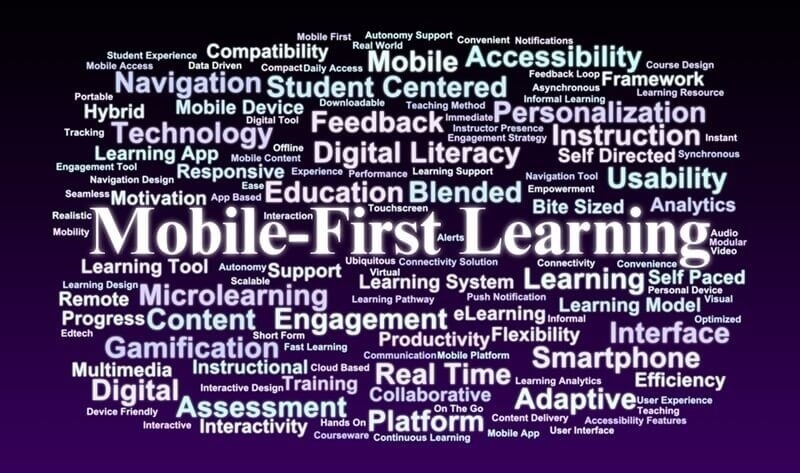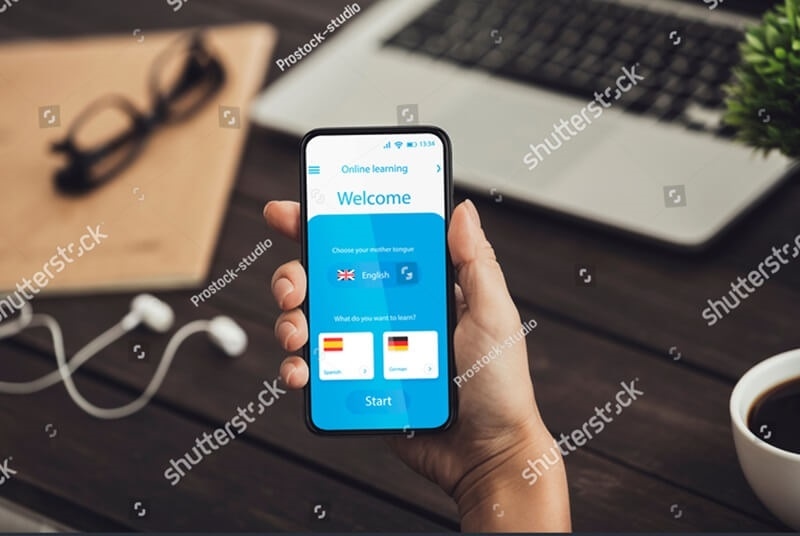
Education technology is developing rapidly, and smartphones have grown to be the primary tool for learning in people's lives. Massive mobile-first learning is no longer a matter of convenience—it has become the core of the whole process.
By 2025, it is possible that we will not recognize the classrooms of today, with their physical walls and desks, as they will be replaced by our smartphone screens.
The term "mobile-first learning” entails the creation of classes and educational materials primarily for smartphones and other mobile devices. In contrast to the traditional online learning method that is mostly for desktop, mobile first e-learning design is mainly for the mobile user. The idea here is to consider the smaller screen and touch nature, and one can learn wherever he is.
With the trend of mobile learning in 2025, educational institutions such as schools and universities, as well as online platforms, are getting their lessons ready for mobile formats. Learning on mobile devices in education is becoming more common, as students increasingly prefer accessing content anytime, anywhere.

Smartphones have the capability to provide learners with the best features of traditional classrooms or desktop-based courses in a way that negatively impacts the value of these educational methods:
With mobile-first edtech solutions, there is no need for textbooks or long classroom sessions to get access to high-quality education.
According to the mobile learning trend 2025, the majority of learners will primarily use their smartphones to access courses. Educational organizations and edtech companies are upgrading to mobile-friendly platforms.
Artificial intelligence and data analytics are transforming mobile-first learning by tracking progress and providing personalized feedback. Online education through a mobile device enables students to complete their activities at different times while still receiving assistance when necessary.
Remote learning is another contributor to the agricultural growth of mobile-first platforms. They make students reachable in rural areas or less developed areas, providing education to anyone interested. By overcoming obstacles, it means that education is available everywhere equally in the world.
Content for mobile-first e-learning needs a special design approach to be effective. Some of the principles are:
These methods make learning on mobile devices in education more effective. In some cases, mobile-first education can be even more successful than the traditional online courses.
Many mobile-first edtech solutions are changing the face of education. The number of adaptive apps, virtual classrooms, and interactive study tools is rapidly increasing. Gamified learning, which involves turning lessons into challenges, helps students stay motivated.
Social learning features allow users to collaborate, discuss, and share their ideas with others in real time. Mobile-first edtech solutions offer a perfect learning environment that can easily come along with you wherever you go.
Mobile-first learning changes the face of education by going beyond the traditional means of teaching in classrooms. Students are now allowed to study while on the bus, during their breaks, or even when waiting for their turn in the line. The fact that studying can always be done without interruptions is what makes it possible to fit education into the daily routines of people.
Mobile-first edtech solutions provide short lessons, interactive quizzes, and engaging multimedia. Education via smartphone online also supports self-paced learning, thereby giving students the freedom to decide when and how they study.
The concept of mobile-first learning is not confined to educational institutions. Professionals use smartphones to take training, develop skills, and obtain certifications. Employees can learn during short breaks or while commuting; thus, career growth becomes more flexible.
Mobile-first e-learning design is also enabling the professional and personal development of users through adaptive content and personalized learning paths. As the mobile learning trend of 2025 continues to expand, smartphones are becoming the primary tools for lifelong learning.
One of the features of mobile-first learning is that it raises the active involvement of the learners. A smartphone user can do quizzes, polls, or even get into a discussion from any place. The video tutorials, animations, and simulations can break down complicated subjects for a better understanding.
The interactive features are helping the learners to retain the information given and, at the same time, keep them active. Mobile-first edtech solutions frequently do so by issuing on-the-spot feedback, thus providing a highly personalized and incentivizing experience.
With a mobile-first approach, education has the potential to go as far as the most distant students or those living in deprived areas. Through online lessons concentrated on smartphones, students who are deprived of the facilities of traditional classrooms and cannot use desktop computers can keep up with their studies.
At present, mobile-first e-learning design options have been upgraded to be compatible even with slow internet connections, and they offer downloading lessons for offline use. This equality leads to a decrease in educational discrepancies and makes learning on mobile devices increasingly accessible to everyone on the globe.
Besides the advantages, mobile-first learning also faces the following challenges:
Courses must be designed carefully, and strategies must be developed to keep students motivated and involved. In spite of the obstacles, the pluses of mobile-first learning are more than the minuses.
Students should follow certain practices that will help them to get the most out of mobile learning:
By following these practices, learners will be able to fully utilize both the flexibility and the convenience of mobile-first learning.
Mobile-first learning is changing the face of education in 2025. Smartphones have stopped being a source of distraction and have turned into an essential learning tool. The mobile learning trend of 2025, along with education via smartphone online, mobile-first e-learning design, and innovative mobile-first edtech solutions, is setting the stage for the classroom of tomorrow.
Students, educators, and institutions that are aligned with this trend will be successful in a world where learning is at your fingertips. The classroom of 2025 is mobile, and mobile-first learning is at the forefront.
This content was created by AI